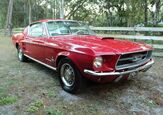2025 Kia Carnival Hybrid First Drive Review: Easy Choice

This is the 2025 Kia Carnival. We at AutoGuide have liked the brand’s big people-mover since it arrived on the scene a few years ago.
Kia gave the big MPV—or Life Utility Vehicle according to the Canadian marketing department (big LUV!)— a thorough facelift for 2024, adding more tech and family-friendly features, all wrapped up in a tweaked, even more SUV-like look. That’s good.
This ’25 model adds something I think matters even more, for families or folks who simply appreciate the practicality of a large, sliding-doors vehicle. A hybrid powertrain. After spending a day with the electrified model in and around San Diego, it’s clear this is the Right Choice.
2025 Kia Carnival Hybrid Quick Take
With acres of space and clever features, the Kia Carnival was always a good family vehicle. Its V6 just gave it a serious thirst. The hybrid addresses that with an easy 50-percent efficiency boost, while maintaining the value advantage in the segment.
What’s new for 2025:
Kia updated the Carnival for ’24, bringing in its latest infotainment system, adding more standard safety kit and improving the family functionality of the cabin. We mean proper detail stuff too, like expanding the front cupholders by 16 millimeters to fit a Starbucks Trenta—or a Big Gulp, if you’re feeling less bougie. The whole package comes wrapped in styling that is even more SUV-like than before—but no, AWD is still not part of the package. If you want that in your minivan, it’s still Toyota and Chrysler’s game.
2025 sees the hybrid join the ranks. Available in four trims in America and three in Canada, it skips the base gasser trim but does cover the top one, fancy full-recline middle-row seats and all.
Exterior style: Playing dress-up
2025 Kia Carnival Hybrid First Drive Review: All the Details
It feels like Kia switches up its design language every 18 months. When the Carnival debuted three years ago, it had a squared-off, handsome look that aligned with the likes of the Sorento and Seltos. After that came sleek EV6 and funky Sportage, but it’s the award-winning EV9 that has set the design tone for the past year. The angular (and amber) “star map” LED lighting frames a big ol’ gaping grille, in a familial way that looks well integrated from head on, but a bit disjointed from the front three-quarters. There’s a similar lighting shape out back now, too.
Kia’s gone for even more overt SUV touches here, with big plastic skid plates at either end. There’s also a Dark Edition for the SX trims that, er, darkens a lot of the exterior trim and swaps in black 19-inch alloys. There’s one industry trend Kia can’t ditch, I suppose.
Powertrain and fuel economy: Better in every way (but one)
Kia hasn’t just dropped its familiar, electrified 1.6-liter turbo-four setup into the Carnival’s tall nose and called it job done. There’s a more powerful electric motor, the most powerful of any Kia hybrid, putting out 72 horsepower all on its own. Combined system power is 242 hp, or 45 fewer ponies than the V6 model. Torque is higher however and, at 271 pound-feet, it narrowly beats everything else in the segment. A six-speed handles shifting duties.
Out on the road, the new powertrain makes so much sense. It’s well-mannered enough and while it isn’t what you’d call quick, it’s well-suited for a vehicle this size. Unless you put your foot to the floor for a pass, it’s quiet too. The six-speed matches the driver’s intentions well with smooth shifts, though it’s a little sleepy in Eco mode.
Kia has added wheel-mounted paddles here to control the regenerative braking, a move we’re seeing more often on regular hybrids. There are three levels, all subtle but with enough variance between them. The most aggressive setting can feel unnatural and thus is hard to judge, but the others work well.
Fuel economy is rated at 33 mpg combined, or 7.2 L/100 km in Canada. I’m going to keep stressing this: that’s 50-percent better than the gas model, and that advantage extends to the single-tank distance. We’re talking over 600 miles or around 1,000 kilometers—you’ll be stopping for your own sake long before the Carnival needs to. There’s just one drawback: towing capacity is down to 2,500 pounds instead of 3,500 as in the V6.
Handling and drivability: It’s a big box
The Carnival still drives like it looks: a big box on wheels. The steering is appreciably light and easy to judge, and sightlines are great. Body roll is noticeable but acceptable for the segment.
Kia’s curated drive route included a winding section better suited to a Corvette than a Carnival. Were we able to switch the drive mode to Sport and witness the MPV dispatch the section with more polish than expected? Sure. But like a parent, the Carnival wasn’t angry with our descent into hooliganism—it was just disappointed. Don’t leave a junction and floor it: that’s enough to upset the traction control, which takes its sweet time relinquishing control over the power again afterwards.
Ride quality and comfort: Road trip ready
As mentioned earlier, the Carnival is quiet on the move. At least part of the reason is the hybrid’s unique active aero flaps low down in the front bumper, which contribute to a 0.01 improvement in the coefficient of drag. The ride is well-damped and predictable, even on these larger 19-inch alloys and the low-profile rubber they come with.
Comfort levels are naturally high. The front seats are well-cushioned with good lower-back support for longer drives. The second row’s swanky lay-down seats are sure to be a hit, but it’s important to note they’re a) very heavy to maneuver into place and b) cannot be removed. That makes access to the way-back fine but not as good as others in the class. Once in the back there’s plenty of room for adults, and still a deep well of storage behind the seats. The Carnival has some of the most impressive seats-down cubic footage in the segment too—just remember, again, the best figures aren’t possible with the relaxation seats.
Interior style and quality: Fancy family
Every tester on the event is the top SX Prestige (or simply SX+ in Canada). This brings in a striking two-tone leather cabin, in either black and Tuscan Umber (Tuscan Brown in Canada), or a navy with very light gray. The latter looks excellent, and the blue extends to the plastic around the door frames, too. I know it’s not the best color choice for serious family duty, but it makes for the best-looking cabin the class.
The dashboard design is simple and elegant, a thin row of shiny piano black and an even thinner spar of metallic trim separating the two colors while incorporating the vents and ambient lighting. The center console lacks a storage cubby underneath, but has a sizeable space fore and aft of the shifter for various bits and bobs. That shifter switches over to a Genesis-like rotary dial for hybrid duty, as well.
There are clever details all around the cabin. The seatback USB ports are easy to reach; same goes with the front passenger seat adjustments from the second row. Kia puts the second-row climate panel in the headliner however, so that only adults or older kids can fiddle with it.
Tech and safety: Gains and loses
The Carnival adopts Kia’s latest infotainment system. It’s stylish and quicker than before, but the ultra-minimal design can leave you guessing which sub (or sub-sub) menu you’re in. The native navigation is also fiddly, with a confusing layout. The second-row camera is still here, though I couldn’t find the Passenger Talk feature of the pre-facelift model. At least Apple CarPlay and Android Auto are both wireless on all trims now.
The switchable climate/navigation panel is just as form-over-function here as it is elsewhere in the Kia lineup. The brand has seemingly acknowledged this by allowing owners to set a default so the panel reverts back after a few seconds, but it still results in more taps—and thus, eyes off the road—than a slightly larger screen or, even better, physical buttons.
A head-up display is big, bright, and provides good information including that from Highway Drive Assist 2, which is exclusive to the top trim. Despite the name, HDA2 will function on regular roads just fine, following the curve on some roads my drive partner and I expected it to give up on. The system also takes a lax approach to drivers keeping their hands on the wheel…
Of course there’s a huge list of driver assists on every Carnival. New this year is an airbag that deploys between the driver and passenger, keeping them from colliding should the worst happen.
Value, dollars, and sense:
Kia’s electrification program skips over the base-model Carnival, which makes the eight-seat LXS (Canada: LX+) the jumping off point for $41,895 ($48,595 CAD) including destination. That does put it slightly north of the all-hybrid Toyota Sienna’s LE entry point; adding AWD to the ‘Yota puts them at parity.
That relationship continues right to the top of the of the lineup in America, where the Kia’s $56,990 as-tested price puts it right around a fully loaded Sienna Platinum.
In Canada however, the Kia has a clear value play. Pricing is very aggressive at $58,745 CAD for a loaded model; the only difference being no second-row entertainment for Canucks. The top available Sienna—a Limited trim, not even the Platinum—is over $6,000 dearer.
Final thoughts: 2025 Kia Carnival Hybrid First Drive Review
Can the upgrade be enough to shift the Carnival up from its last-place sales spot in the minivan scene? It should, because based on our first impressions after a day driving around the San Diego area, the Carnival hybrid isn’t just the best family vehicle Kia sells, buyers who need a big, practical box will find a lot to like, too. Kia suspects the hybrid will take 35 to 40 percent of the Carnival split moving forward, but given all the advantages it has, that seems low.
Become an AutoGuide insider. Get the latest from the automotive world first by subscribing to our newsletter here.
Pros | Cons |
|---|---|
Better fuel economy | Still no AWD |
Better manners | Infotainment needs fine-tuning |
Still huge and practical inside | Odd regenerative braking |
2025 Kia Carnival MPV Hybrid | |
|---|---|
Engine: | 1.6L I4 Turbo w/ hybrid |
Outputs: | 242 hp, 271 lb-ft |
Drivetrain: | FWD |
Transmission: | 6AT |
US Fuel Economy (mpg): | 34/31/33 |
CAN Fuel Economy (L/100 km): | 6.9/7.6/7.2 |
Starting Price (USD): | $41,895 (inc. dest.) |
As-Tested Price (USD): | $56,990 (inc. dest.) |
Starting Price (CAD): | $48,595 (inc. dest.) |
As-Tested Price (CAD): | $58,745 (inc. dest.) |

Kyle began his automotive obsession before he even started school, courtesy of a remote control Porsche and various LEGO sets. He later studied advertising and graphic design at Humber College, which led him to writing about cars (both real and digital). He is now a proud member of the Automobile Journalists Association of Canada (AJAC), where he was the Journalist of the Year runner-up for 2021.
More by Kyle Patrick











































Comments
Join the conversation